From Underdogs to Heroes
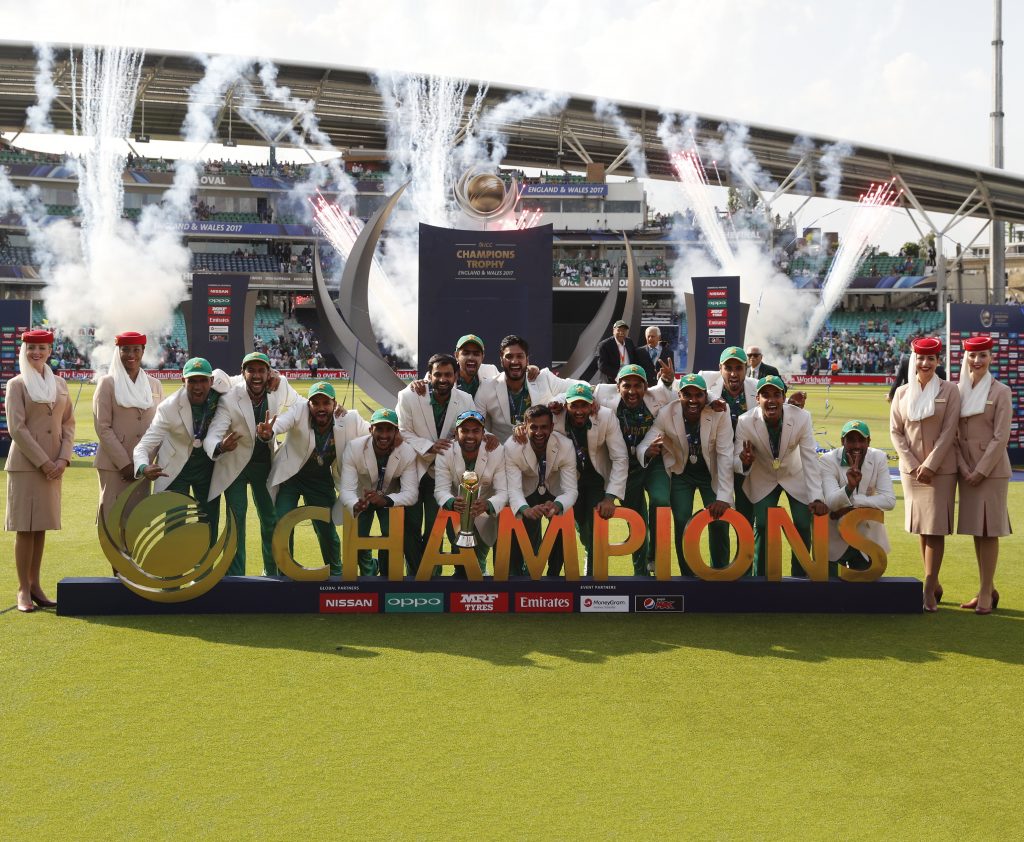
“We are No. 8, so we have nothing to lose,” said Pakistan captain Sarfraz Ahmed on May 27, in his first press conference ahead of the Champions Trophy in the UK, in a bid to pull the pressure off his players’ shoulders.
Eight days later, following the defeat against arch-rivals India in their opening Group B clash at Edgbaston, it was losing a single game that had the masses calling for the players heads and a complete revamp of the team, while opposition politicians took jibes at the Pakistan Cricket Board (PCB).
The Pakistan cricket team never has anything to lose. And Sarfraz knew this perfectly well.
Exactly two weeks later, the same group of players that had faced the wrath of the nation, and was seemingly destined for oblivion, won the second most high-profile trophy in ODI cricket, as they overpowered defending champions, India — the side that trounced them in the opener — in the final of the Champions Trophy.
These two weeks were the most momentous in history for Pakistan, in limited-overs cricket, considering the transformation in fortune they might bring about. What Pakistan pulled off between the two matches against India, is one of the greatest sports tales, and among the most inspiring comebacks of all time.
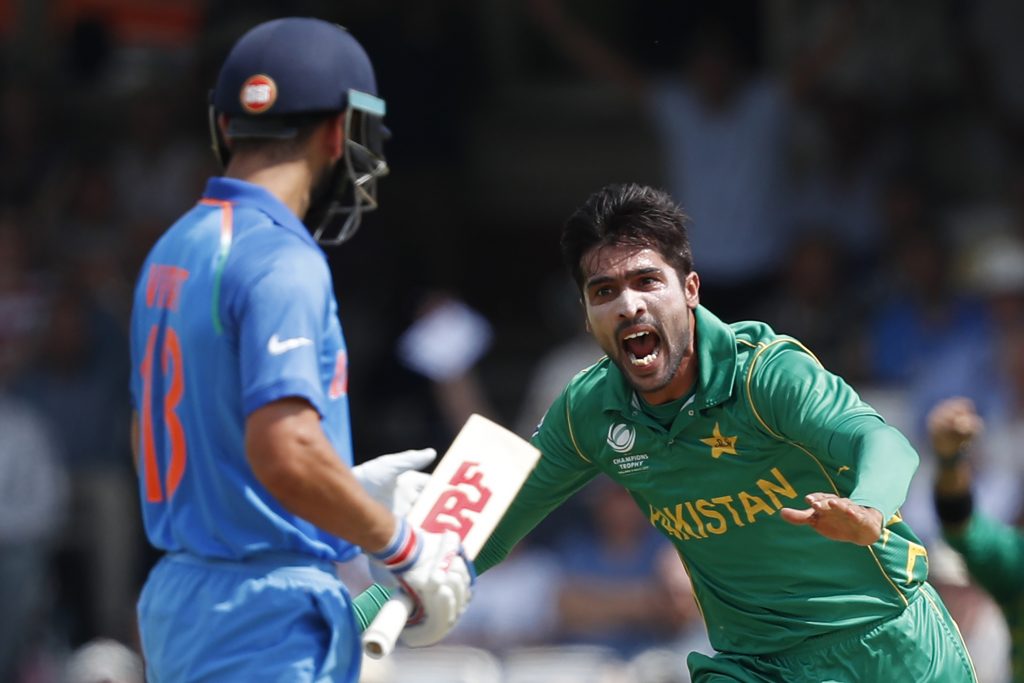
Mohammad Amir
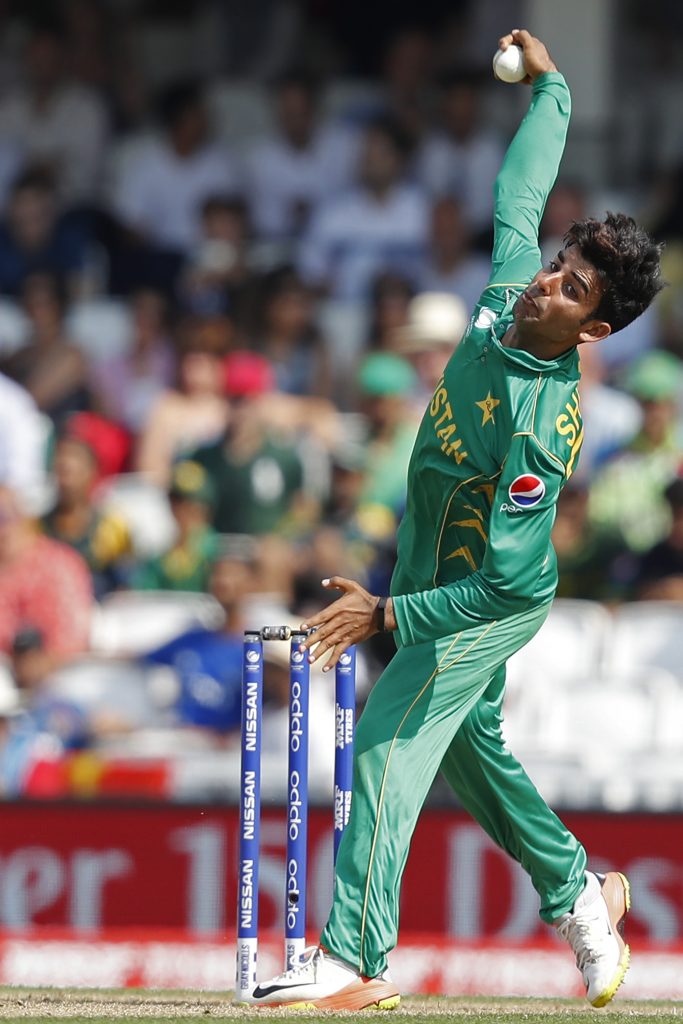
Pakistan were drawn in Group B of the International Cricket Council (ICC) Champions Trophy, along with South Africa, India and Sri Lanka — the former two ranked at number 1 and 3 in the ODI rankings. Pakistan had struggled to qualify for the Champions Trophy in the first place, after squeezing into the eighth slot ahead of the qualification deadline. It meant that West Indies and Zimbabwe were out. Meanwhile, Bangladesh — who were in Group A along with Australia, New Zealand and England — were ranked one place above Pakistan.
With the top two teams from the four-member groups qualifying for the semi-finals, Pakistan knew that they had to beat either South Africa or India to have a shot at going through to the knockout stage, with the final group game scheduled against Sri Lanka.
The Champions Trophy format is such that you can only lose one match, and it becomes a knockout tournament for the side after that. For Pakistan, that one match came against the one side they hate losing to the most.
Pakistan were always expected to lose against India, with the formbook, squads and history all stacked against Sarfraz’s team. But as has been the case with most Indo-Pak matches throughout the years, each fan base expects their side to win, regardless of their standing against the long-time nemesis.
Pakistan’s woeful record against India in ICC events is already well documented, and the fact that in the recent limited-overs matches the side hasn’t fared too well, made India, the defending champions, the overwhelming favourites.
Even so, what happened on June 4, was historic for Pakistan cricket. Their first opening match against India wasn’t just a defeat against India, or merely a drubbing, it was the schooling of a side that had long refused to learn the art of modern ODI cricket, from the side that had mastered it recently.
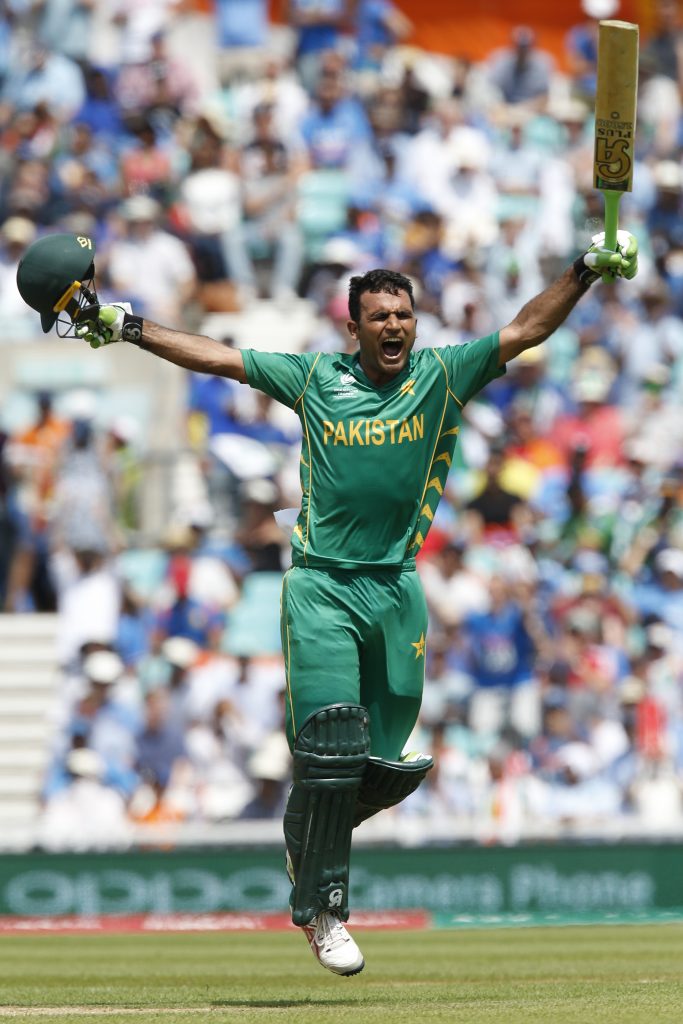
Fakhar Zaman
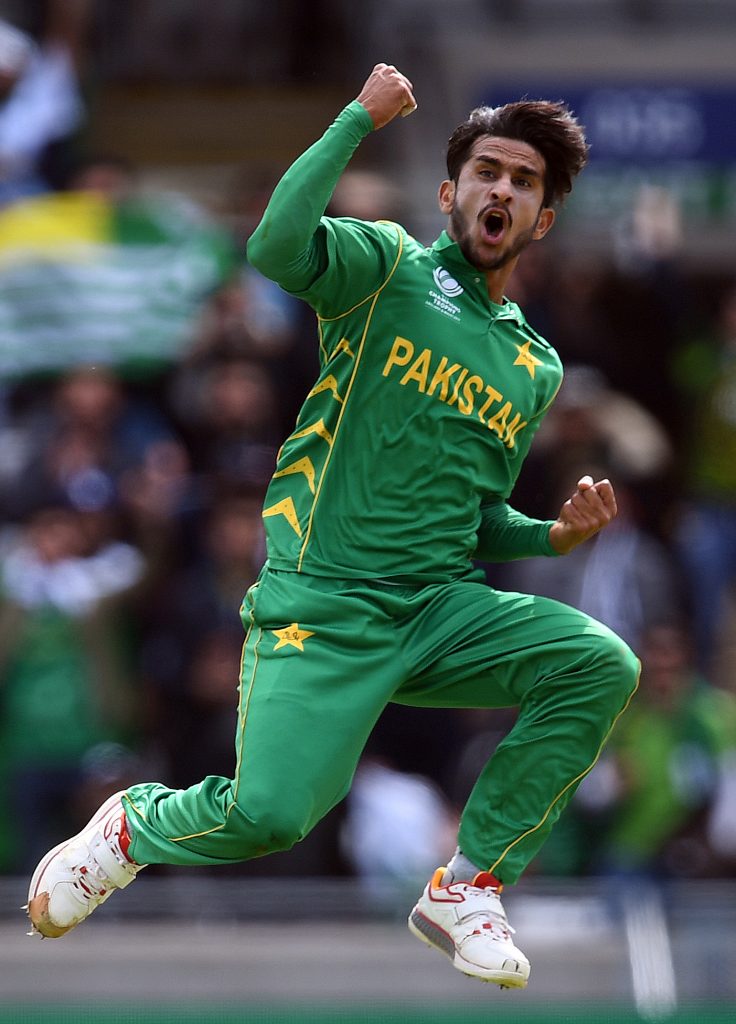
Hasan Ali
From the moment Pakistan won the toss and chose to field first, everything went wrong. From Imad Wasim opening the bowling on a deck suiting the seamers, to Wahab Riaz’s potentially career-ending spell, to dropped catches, to a batting effort that was downright embarrassing — it was a new low for a side that hadn’t had many highs wearing the green recently.
But the 124-run defeat (D/L method) was just the reality check that Pakistan needed.
With the tournament having become a knockout competition for Pakistan, their first do or die assignment was against the world’s top ranked side. With a powerhouse top order, featuring the likes of Quinton de Kock, Hashim Amla, Faff du Plessis, Ab de Villiers and a star bowling lineup including Morne Morkel, Kagiso Rabada and Imran Tahir, it was inconceivable that Pakistan would be able to overcome South Africa.
At 60-1 in the 14th over with De Kock and Du Plessis on the crease, South Africa seemed to have the foundation to post a total beyond the reach of Pakistan’s fragile batting lineup. But some top-class middle overs bowling by Imad Wasim, Junaid Khan — in for Wahab Riaz — and Hasan Ali meant that Pakistan restricted South Africa to 219, despite the Proteas playing their full quota of overs.
Even so, no target is comfortable for an inconsistent batting lineup that now had Fakhar Zaman in Ahmed Shehzad’s place. Fakhar played a quick-fire 23-ball 31 to allow the rest of the one-dimensional top and middle order to take their time and stay at the crease. In the end Fakhar’s opening cameo proved to be the difference as Pakistan at 119/3 after 27 overs beat South Africa on D/L after the rest of the match was rained out. Would Pakistan have even made 220 had rain not washed out the final 23 overs? We’ll never know the answer to that question.
However, South Africa went on to lose their final game against India and were knocked out of the tournament. But even after beating South Africa, there was little optimism back home in Pakistan.
On Monday June 12, Pakistan faced Sri Lanka in the final match of Group B. India had already qualified for the semi-finals after beating South Africa, while Group A had England and Bangladesh as the top two sides, after rain ruined Australia’s tournament and the Kiwis had lost to the Tigers.
Pakistan started the day at the bottom of Group B, knowing that a win against Sri Lanka would be enough for them to qualify.
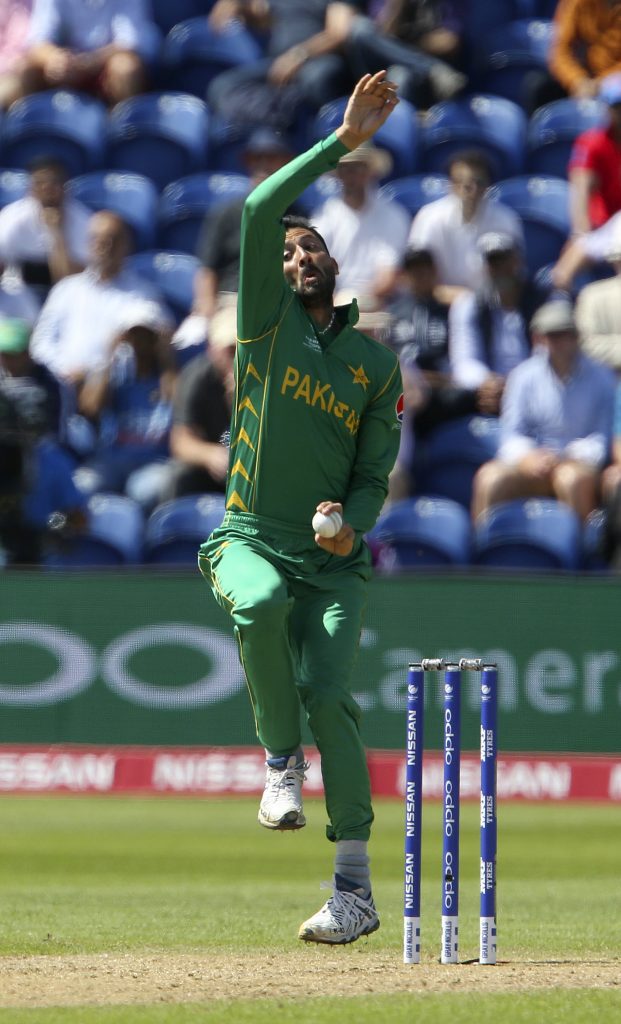
Junaid Khan
The match mirrored the South African game in that Sri Lanka were bogged down again in the middle overs by inspired Pakistani bowling. At one stage, the Lankans were 161-3 in the 32nd over, eyeing a score well over 300. This was a side that only four days back had chased down 321 against India as if it was nothing.
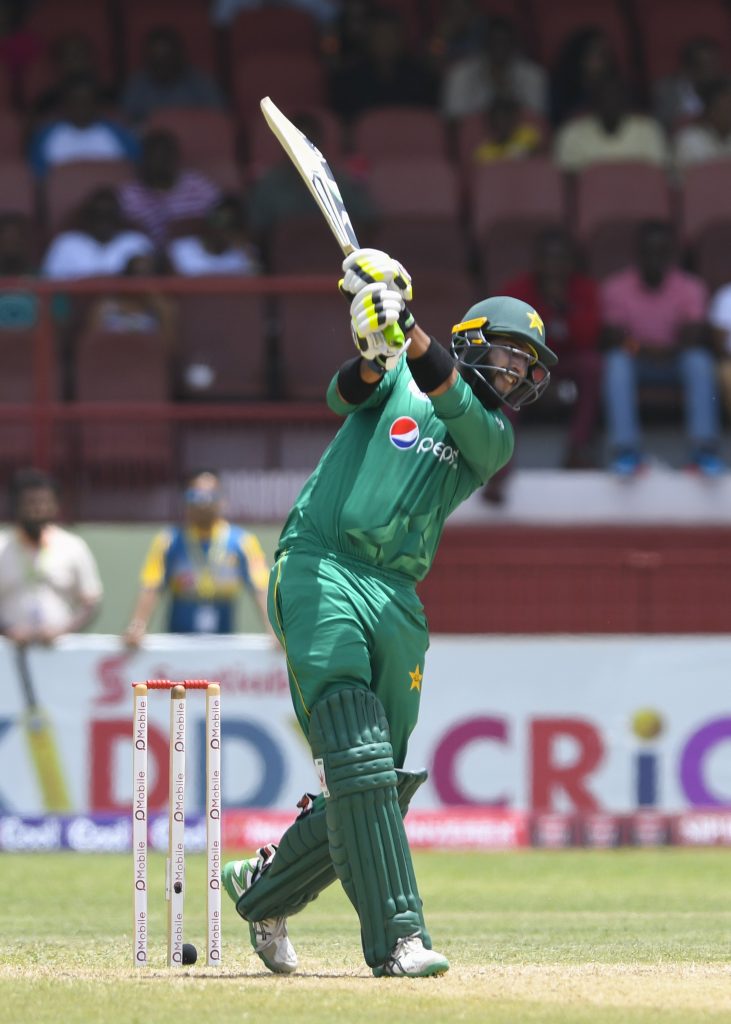
Imad Wasim
Hasan Ali and Junaid Khan once again starred with the ball, joined by Mohammed Amir who took the two most crucial wickets of Niroshan Dickwella and Angelo Mathews, as Sri Lanka finished with 236-10.
But, once again, Pakistan’s chasing ability was under scrutiny.
Fakhar Zaman and Azhar Ali got Pakistan to a resounding start with a 74-run partnership. Fakhar scored a 36-ball 50 as Azhar ended up with 34.
But from 92-1, Pakistan collapsed to 137-6 and then 162-7, with captain Sarfraz Ahmed running out of partners.
The 74-run unbeaten partnership between the skipper and an equally resolute Amir saw Pakistan through in the most dramatic of circumstances, with Sri Lanka dropping Sarfraz twice, including a sitter at mid-on that was missed by Thisara Perera.
The unheralded, out of sorts Pakistan, that had been pulverised in the opening match, had somehow made it through to the semi-finals finishing up with 237-7.
All of a sudden the fans were expressing their interest loudly and proudly. The cricket team was all over the news, social media, hogging most of the trends.
Off-the-field videos and images were being shared as a relatively relaxed side entered the knockout stage. One of these videos showed captain Sarfraz Ahmed, anxiously asking the media manager ahead of a press conference, if all the journalists present were ‘English waalay.’
While that instigated the customary social media debate over whether proficiency in English was relevant for the athletes, the actual English test lay ahead.
Of the four sides remaining in the tournament, hosts and favourites England were the only ones that were unbeaten — and they hadn’t looked troubled as they overcame Bangladesh, New Zealand and Australia with relative ease, scoring at 6 runs an over in all three matches.
England had also beaten Pakistan in both of their bilateral ODI series over the past 18 months — 2-1 in UAE in November 2015, and 4-1 in England in the summer of 2016.
Pakistan were the overwhelming underdogs — just what the opposition wouldn’t want them to be.
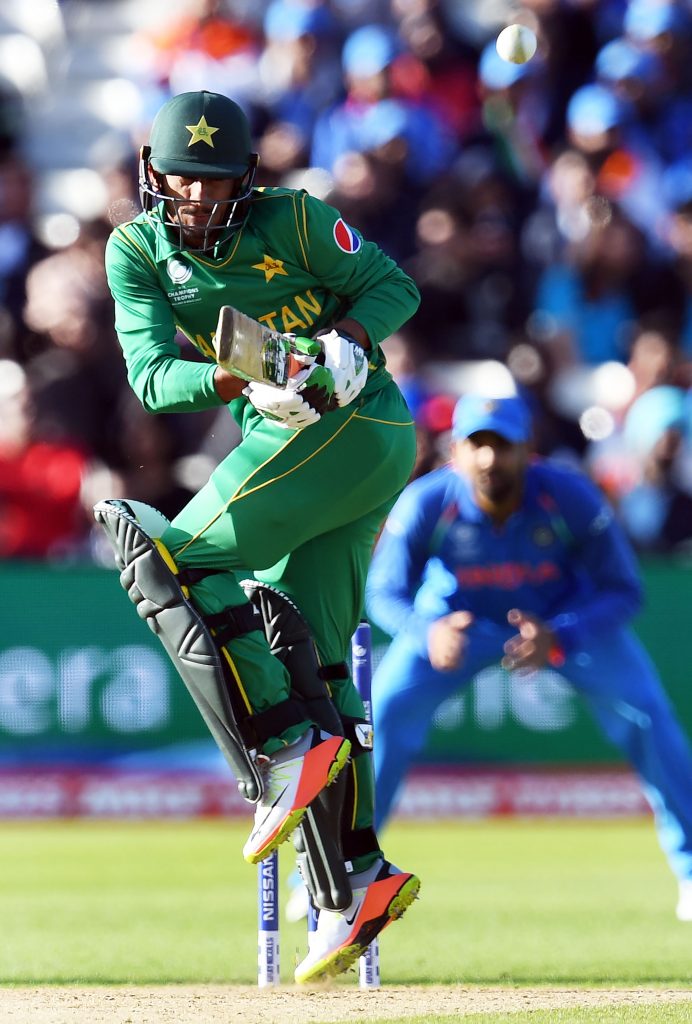
Azhar Ali
In a repeat of middle over gags, Pakistan restricted England from 128-2 in 27 overs to 211 all out in 49.5 overs. Junaid Khan and Hasan Ali were, once again, the chief instigators, with Rumman Raees — the understudy for Amir, who was out with a back spasm — chipping in with two wickets as well.
As Pakistan chased, Azhar and Fakhar went one better this time, posting 118 for the opening stand as the latter continued his progressive scores with a 57 this time. Azhar top scored with 76 as Babar Azam and Mohammed Hafeez scored 30 each to mop up the score with 215-2 in 37.1 overs.
Bottom-ranked Pakistan were now going to play the tournament decider.
India took on Bangladesh the day after Pakistan’s semi-final win, and Pakistanis followed the match with as much interest as they did the national side’s semi-final. But watching India chase down 264 in 40 overs at the loss of one wicket was hardly the confidence-booster they were looking for.
India and Pakistan have never played an ODI World Cup final. They’ve played a semi-final (2011) and a quarterfinal (1996) as the only two knockout matches in the two major ODI events. They’ve played the final of the 2007 World T20 — their closest knockout contest at ICC events — but never a major ODI final.
So the Champions Trophy decider was going to be the biggest ODI clash between the two sides — or second only to the Mohali semi-final from 2011, considering that India ended up winning the World Cup.
While Pakistan were on a comeback stampede, the scars from the first match against India, and a multitude of question marks were very much there, since each of the trio of Pakistan’s wins had been virtually identical.
Could Pakistan restrict India to less than 300? Would Pakistan be able to chase anything over 250? Would the Indian voodoo over Pakistan at ICC events continue? What if Pakistan batted first — something they hadn’t done in the tournament at all?
With both sides looking to bat second, for contrasting reasons, the toss was going to be crucial. Indian captain Virat Kohli won it, leaving Pakistan with the unfamiliar scenario of posting the total.
While Pakistan had the most impressive attack in the tournament, it was obvious that anything less than 300 would be a cakewalk for India.
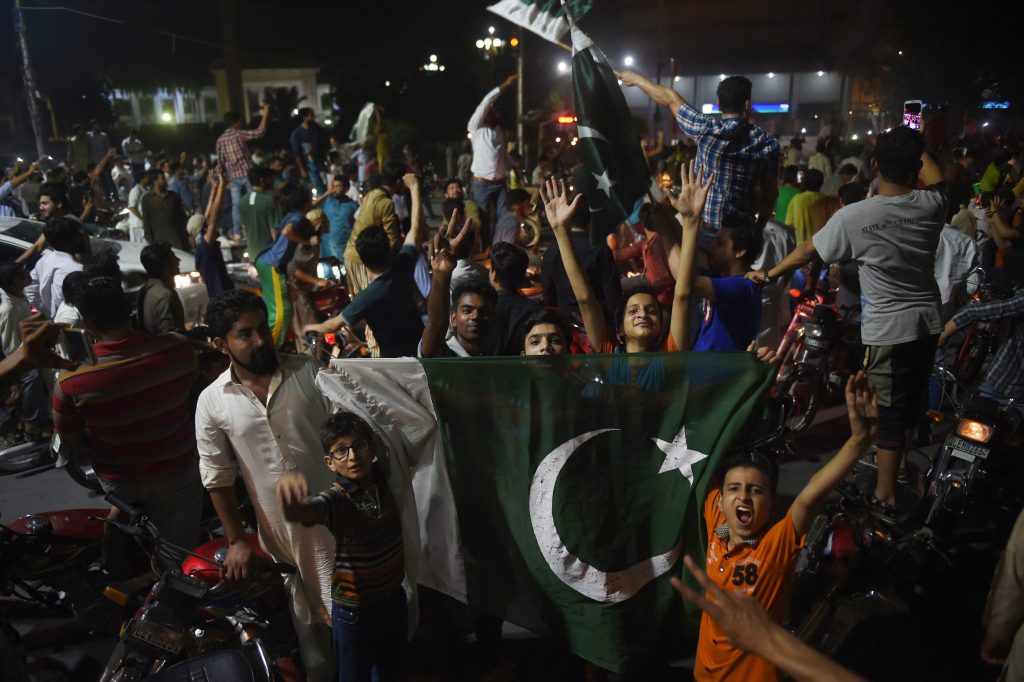
The nerves were on display as Azhar Ali and Fakhar Zaman got off to a shaky start. Fakhar had two inside edges early on, both steering clear off the stumps, while the duo would go on to give the Indians a couple of clear run-out opportunities as well.
But as it turned out, the turning point of the 50-over contest came in as early as the fourth over, when Fakhar Zaman was caught off a no-ball. He then went on to make a domineering century, that could win you any contest, as he left Pakistan at 200-2 in the 34th over, meaning that even a run a ball would’ve taken Pakistan past 300. After Fakhar, it was up to Hafeez to play a 37-ball 57 in the final overs to put 338 on board.
Chasing 339 to win any final is a challenging task. But if there’s one batting side you’d want to go for it, it would be India, with the top three of Shikhar Dhawan, Rohit Sharma and Virat Kohli dominating the tournament-scoring charts.
But ahead of the final, the Pakistani camp had already been talking about the little match time that the Indian middle order, featuring the likes of Yuvraj Singh and Mahendra Singh Dhoni, had had. It was evident that for India to chase down the score, the top three would have to do the bulk of the scoring.
Three overs in, Sharma and Kohli were back in the pavilion, with Dhawan joining them six overs later, leaving India at 33-3 in 9 overs. It was Amir who dislodged all three, practically getting Kohli out twice off two balls after Azhar Ali had dropped the Indian captain at first slip.
For Amir, the redemption from the spot-fixing scandal was perhaps complete on the same soil, as he took the five most crucial wickets in the two most important matches for Pakistan.
A late blitz by Hardik Pandya was all India could offer after losing Dhawan, as the defending champions were bundled out for 158 in 30.3 overs (Pakistan winning by a record 180 runs), leaving Pakistan with the Champions Trophy for the very first time in its history.
Pakistan have now joined India as the only two cricketing sides to have won all four major ICC titles across the three formats: World T20, Champions Trophy, World Cup and the Test Mace.
In terms of sporting achievement and a two-week turnaround, Pakistan’s win ranks up there with any triumph one can think of — and not necessarily within the realm of sport. But the impact that it would have for Pakistan cricket would even top the 1992 World Cup win.
Pakistan have now regained the belief that they belong with the best in ODI cricket. They have also overcome the Indian dominance at ICC events — although a second World Cup win still remains a dream. But more crucially, it was the fearless brand of cricket that Pakistan played that was even more significant than the win itself.
The Champions Trophy win has brought the Pakistan ODI side out of a shell. They can now look at the 2019 World Cup — scheduled for England — and beyond, with a feeling of expectation and not just hope.
With wins like these, celebrated by the entire world, international cricket cannot stay away from the Pakistani stadia for too long.
The Pakistan Super League was instrumental in bringing the Champions Trophy home, by producing the champions that won it for Pakistan. It would now look forward to formally opening the gates for all forms of international cricket.


